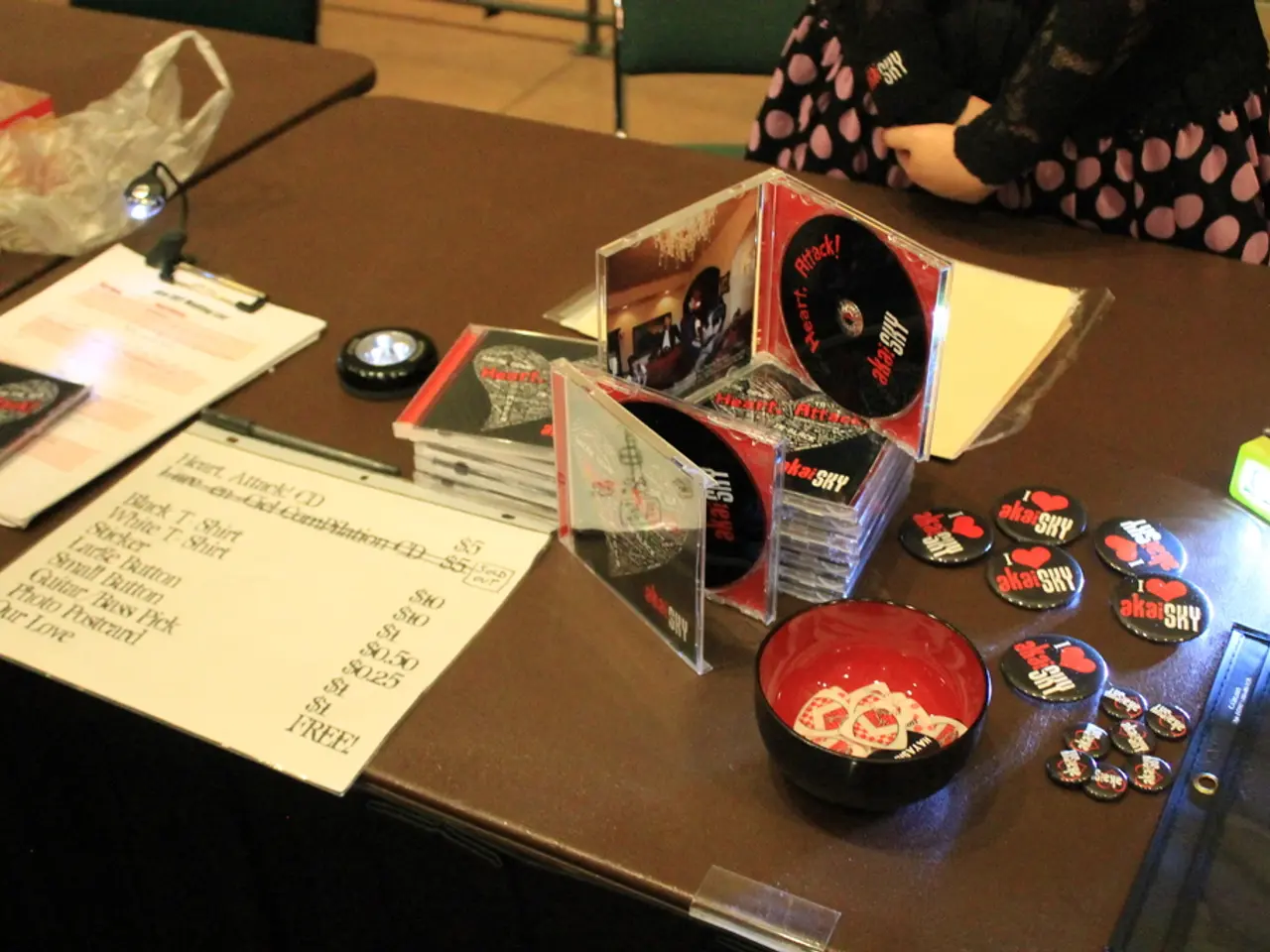" procedure for releasing an album: The fundamental steps of music dissemination"
In the ever-evolving world of music, the importance of album covers, project titles, and understanding the differences between singles, EPs, and albums cannot be understated. Here's a comprehensive guide to help you navigate this landscape successfully.
1. The Significance of Album Covers
Album covers continue to hold significance in today's musical landscape. They serve as the first point of contact for listeners, often being the only visual element you can control in digital stores. A well-designed cover can enhance the visual identity of your music, visually conveying the main idea or emotion you want the audience to sense before hearing the music.
2. Choosing the Right Genres and Subgenres
Finding the perfect genres and subgenres for your project is crucial. Be true to your sound, avoid humour, and use subgenres to expand your borders. This will help you reach your target audience more effectively.
3. Understanding Single, EP, and Album Classifications
On platforms like Spotify, a release will appear as a Single if it has 6 songs or less and contains less than 30 minutes of music. All other releases will appear as albums. On iTunes and Apple Music, a release will appear as a Single if it has between one and three songs with a total duration not exceeding 10 minutes. A release will appear as an EP if it has between one and three songs with a total duration exceeding 10 minutes and not reaching 30 or if it has between four and six songs and lasts less than 30 minutes.
4. Crediting Your Collaborators
It's essential to discuss with collaborators whether they should be credited as a collaborator on a track before finishing and releasing the project. Including all collaborators in the release is important for crediting them and avoiding conflicts.
5. Technical Requirements for Album Covers
Each online music store has its own guidelines for album covers. Make sure your cover meets digital store technical requirements, such as the cover being a perfect square, minimum 1x1 pixels, and in JPG or PNG format, with a minimum resolution of 72 DPI. For Apple Music, artwork needs to be high resolution without black borders, with any text and logos within designated safe areas to ensure legibility on all devices.
6. Choosing a Definitive Title
Choose a definitive project title that comes from the same creative inspiration as your work. Avoid including release dates, publication format, search terms, and unnecessary information.
7. ISRC Codes
ISRCs are the international standard recording codes, used to identify each unique recording. Make sure to use the same ISRC code for subsequent releases if your music already has an ISRC code from a previous release.
8. Using Samples
If you're using a sample of another artist's music without their permission, it's illegal. Always ensure you have permission to use any samples in your music.
9. Promoting Your Work
Knowing how your work will appear in stores before you start promoting it is crucial. Start by exporting your music in the WAV format of at least 44.1kHz - 16bit for smooth distribution to digital music stores.
10. Geographical Distribution
If you don't want your music to be published in a certain country, don't select the stores that distribute to that country when creating your release.
By following these guidelines, you'll be well-equipped to navigate the music landscape and release your project with confidence.
From the comprehensive guide:
- In correlating with the visual identity of your music, a well-designed album cover can serve as a powerful tool to visually convey the main idea or emotion you want the audience to sense before hearing the music.
- When selecting genres and subgenres for your project, striving to remain true to your sound, avoiding humor, and using subgenres to expand your borders can help you efficiently reach your target audience.








